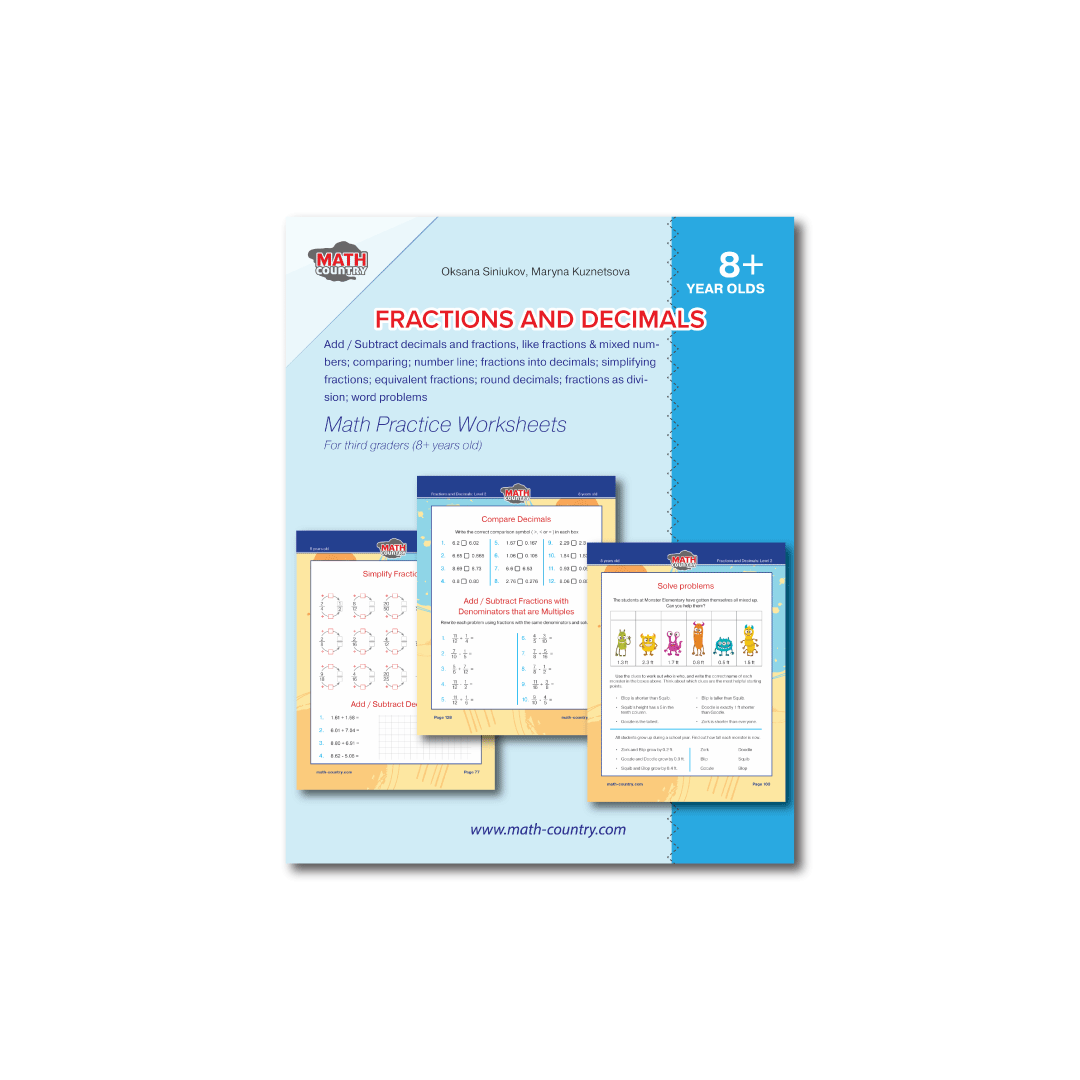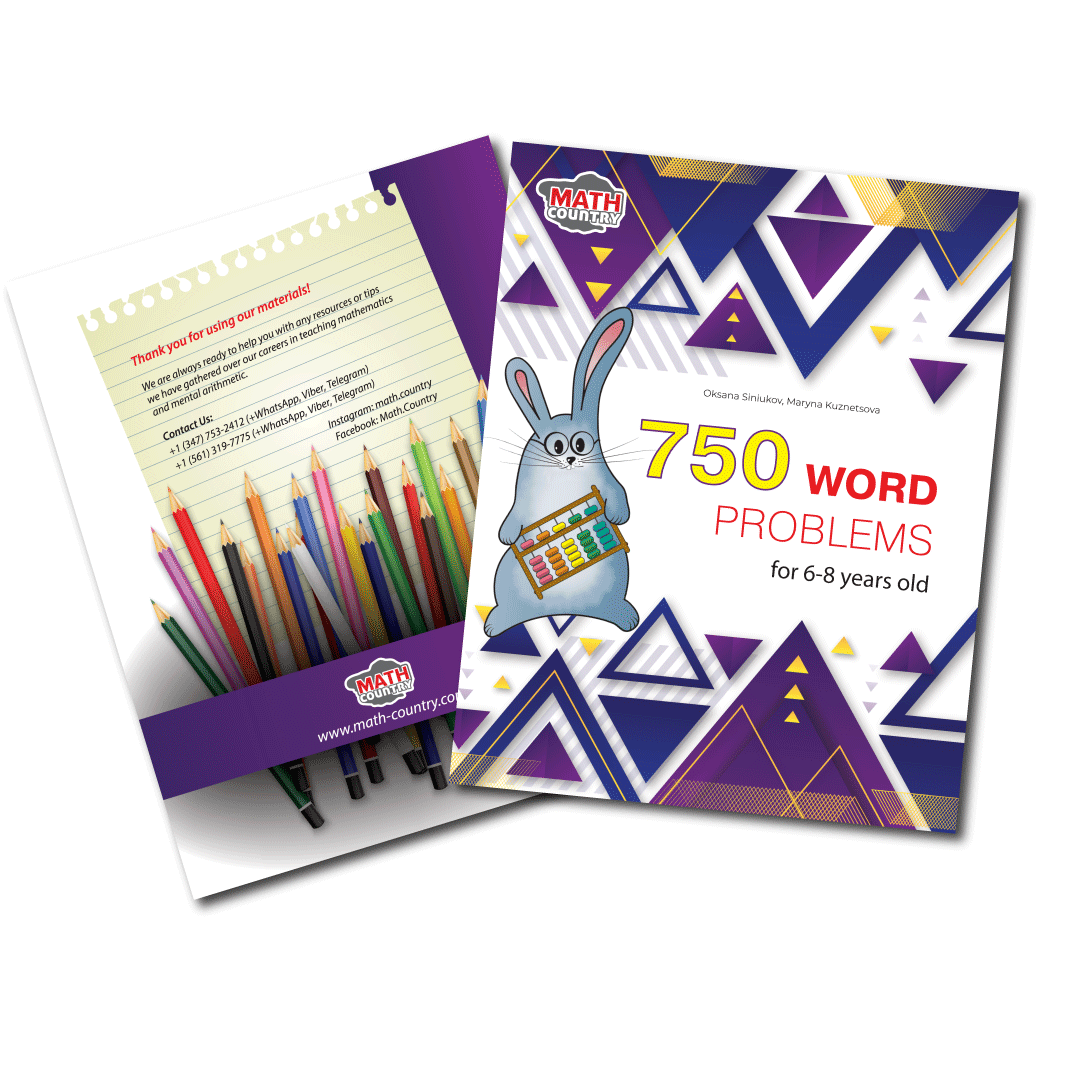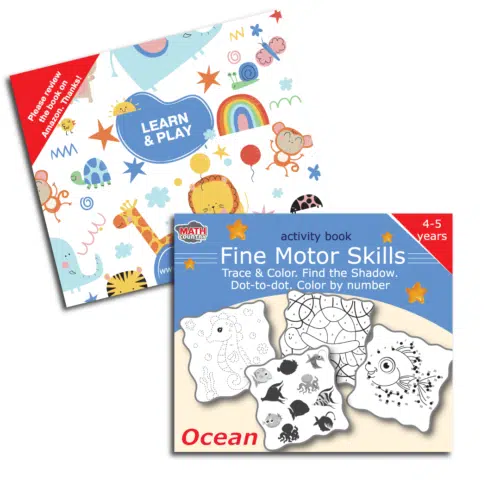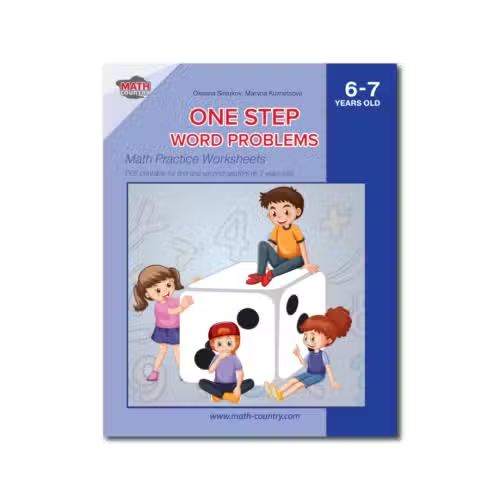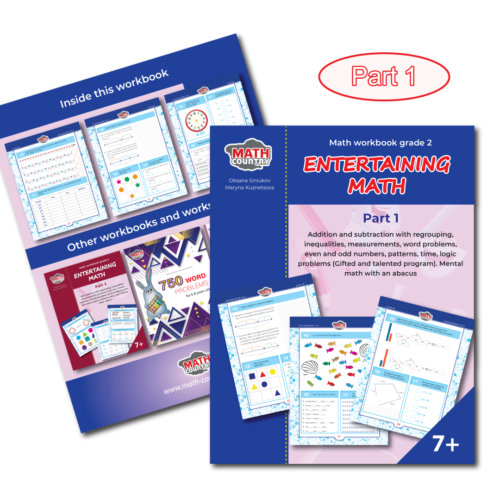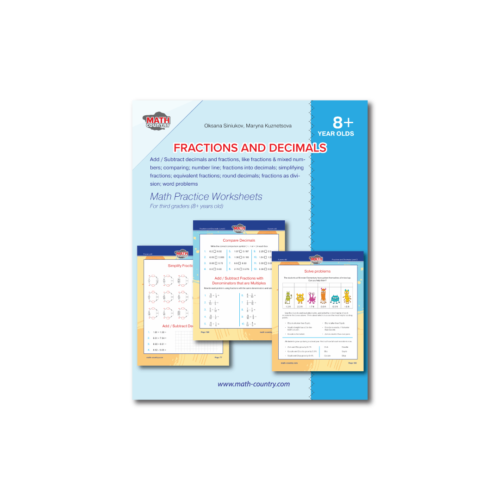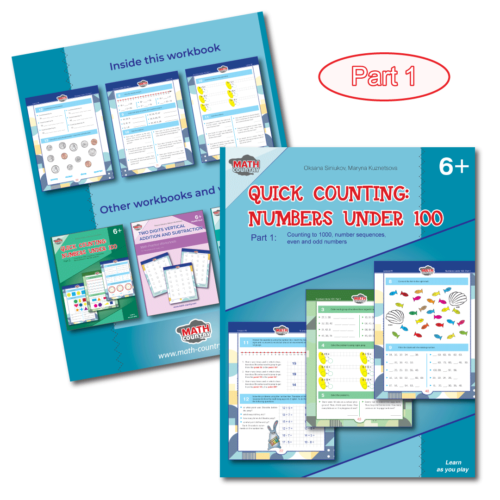Author
Math Country
Share
Author
Math Country
Share
By the end of elementary school, students have to learn fractions and basic operations with them, including comparing fractions. While adding, subtracting, multiplying, and dividing fractions as singular problems is not difficult, everything changes when children solve multiplication fraction word problems. Students who do not understand fractions cannot solve fraction-related word problems. The most difficult problems are those that require multiplication or division of fractions.
Let’s compare two problems:
- Maria has 2.5 gallons of milk. She uses 1/3 of a gallon to make ice cream. How much milk is left?
- Maria has 2.5 gallons of milk. She uses 1/3 of it to make ice cream. How much milk is left?
As you can see, there is a minor difference in the wording of these problems, but there is a huge difference between solutions.
To solve the first problem, we must subtract the amount of milk used from the total amount of milk Maria has. It is a simple one-step problem. If children have solved enough comparing fractions worksheet problems, they easily find the common denominator and subtract fractions.
The second problem is much more complicated. Children must think differently. Maria uses part of the milk she has. We must take the milk Maria has at the beginning as one starting amount (does not matter how much there is). If Maria used 1/3 of this amount, it means that 2/3 of the milk is left. To find the amount of milk that is left, we must multiply 2.5 gallons by 2/3, which is equal to 1.66 gallons.
As we mentioned in the previous article, these types of problems are one of the most complicated in elementary school. It is difficult to explain to children that two words can make such a dramatic difference. So, how can we, as educators, help children to sort this out?
Here is a list of preventive measures that we can use.
First, we should never teach children to solve problems using trigger or key words, which is, unfortunately, a common practice in most elementary schools. If children used to do so, it would be close to impossible to explain that the second problem should be solved with multiplication. Because in children’s minds, the word “uses” is strongly associated with subtraction.
Second, we always need to focus children’s attention not on pure numbers but on what these numbers mean or what they refer to. Never teach children to read the problem and circle given numbers; this is a clumsy tool. Instead, make sure that children understand what is going on in the problem, and teach them to take each word problem as a little story with an unknown ending.
Third, remind children that we can operate only with like items. For example, we can add 5 apples to 10 apples, but we cannot subtract 5 cars from 10 apples. Math is not about numbers; math is about common sense. Again, make sure your students have solved enough comparing fractions worksheet problems. This is the best way to understand that we can operate with the similar items or the same size pieces.
All of these are preventive measures, that help you to teach solving multiplication fraction word problems from scratch.
But what can we do when our children have already learned bad habits while solving problems?
- Simplify the problem. Propose children solve the same or a similar problem using different numbers, replace fractions with whole numbers where it is possible, and use simple fractions like ½, where fractions play a crucial role. For example, the second problem can be simplified like this:
Maria has 4 gallons of milk. She uses half of it to make ice cream. How much milk is left?
Most of the time, children easily solve this problem. Focus their attention on how they solve it, and have them explain the solution step by step, especially why they did not use subtraction.
As a next step, ask children to find 1/3 of the amount of milk. The problem can be worded like:
Maria has 6 gallons of milk. She uses 1/3 of this amount to make ice cream. How much milk does she use?
After children solve this problem, you can return to the original one and ask them to solve it again.
- Since word problems are little stories, have children draw a diagram for each of the problems (look at the picture). When children learn to draw what happens in a problem as a diagram, they can easily solve any problem.
This can help to reverse the issue of learning bad habits such as circling numbers and using key (or trigger) words.
To help children fully understand and master Fractions topic, we specially designed our fraction worksheets grades 2-4. Parents and teachers can use these worksheets for practice fractions problems in class or at home.
Grade 2 Fractions (including comparing fractions) Worksheets
Stay in the loop

